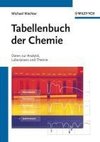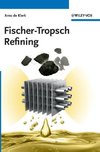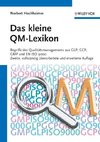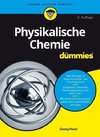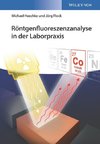
Organic chemistry
Source: Wikipedia. Pages: 99. Chapters: Organic compound, Functional group, Monosaccharide, Heteroatom, Organic reaction, IUPAC nomenclature of organic chemistry, Partition coefficient, List of important publications in chemistry, Charge-transfer complex,... Viac o knihe
Produkt je dočasne nedostupný
23.23 €
bežná cena: 26.40 €
O knihe
Source: Wikipedia. Pages: 99. Chapters: Organic compound, Functional group, Monosaccharide, Heteroatom, Organic reaction, IUPAC nomenclature of organic chemistry, Partition coefficient, List of important publications in chemistry, Charge-transfer complex, Isomer, Natural organic matter, Monosaccharide nomenclature, Carbohydrate chemistry, Bisoxazoline ligand, Carbon-fluorine bond, A value, Cross-linked enzyme aggregate, Vicinal difunctionalization, Arrow pushing, Non-Kekulé molecule, Dichloromethane, Aroma compound, Organocatalysis, Skeletal formula, Chemical glycosylation, Zincke aldehyde, Click chemistry, Mechanistic Organic Photochemistry, Biocatalysis, Spiro compound, Oligosaccharide nomenclature, Substituent, Mauveine, Glycopeptide, Organic synthesis, Carbohydrate conformation, Stacking, Pyranose, Branching, Umpolung, O-linked glycosylation, Outline of organic chemistry, Vinylogous, Glycorandomization, On water reaction, Cascade reaction, Glycosynthase, Chiral ligand, Solvated electron, Homologous series, Free radical reaction, Saturation, N-linked glycosylation, Woodward's rules, Alpha effect, Deep eutectic solvent, Catenation, Alpha and beta carbon, Chemical decomposition, Dynamic covalent chemistry, Mutarotation, Leaving group, Intramolecular reaction, Glutaconaldehyde, Extract, Dipolar compound, Immobilized enzyme, Degree of unsaturation, Carbon-carbon bond, Monoterpene, Colored dissolved organic matter, Bicyclic molecule, Combustion analysis, Saturated and unsaturated compounds, Chiral pool synthesis, Diradical, Carbon-hydrogen bond, Alicyclic compound, Schlenk equilibrium, Bechgaard salt, Furanose, Beilstein database, Angle strain, Bolaamphiphile, 1,3-dipole, Unsaturated hydrocarbon, Folding, Glycopolymer, Unsaponifiable, Side chain, Push-pull olefin, Inherent chirality, Nucleofuge, Electrofuge, Bifunctional, Pendant group, Amylolytic process, Principle of least motion, Captodative effect, Acetylenic, Stereoelectronics, Migratory aptitude, Backbone chain, Desmethyl. Excerpt: The IUPAC nomenclature of organic chemistry is a systematic method of naming organic chemical compounds as recommended by the International Union of Pure and Applied Chemistry (IUPAC). Ideally, every possible organic compound should have a name from which an unambiguous structural formula can be drawn. There is also an IUPAC nomenclature of inorganic chemistry. See also phanes nomenclature of highly complex cyclic molecules. For ordinary communication, to spare a tedious description, the official IUPAC naming recommendations are not always followed in practice except when it is necessary to give a concise definition to a compound, or when the IUPAC name is simpler (e.g. ethanol against ethyl alcohol). Otherwise the common or trivial name may be used, often derived from the source of the compound (See Sec 6. below) In chemistry, a number of prefixes, suffixes and infixes are used to describe the type and position of functional groups in the compound. The steps to naming an organic compound are: Identify the parent functional group, if any, with the highest order of precedence.Identify the side-chains. Side chains are the carbon chains that are not in the parent chain, but are branched off from it.Identify the remaining functional groups, if any, and name them by the name of their ions (such as hydroxy for -OH, oxy for =O , oxyalkane for O-R, etc.).Different side-chains and functional groups will be grouped together in alphabetical order. (The prefixes di-,...
- Vydavateľstvo: Books LLC, Reference Series
- Formát: Paperback
- Jazyk:
- ISBN: 9781157687917


 Anglický jazyk
Anglický jazyk 


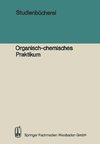
 Nemecký jazyk
Nemecký jazyk 

